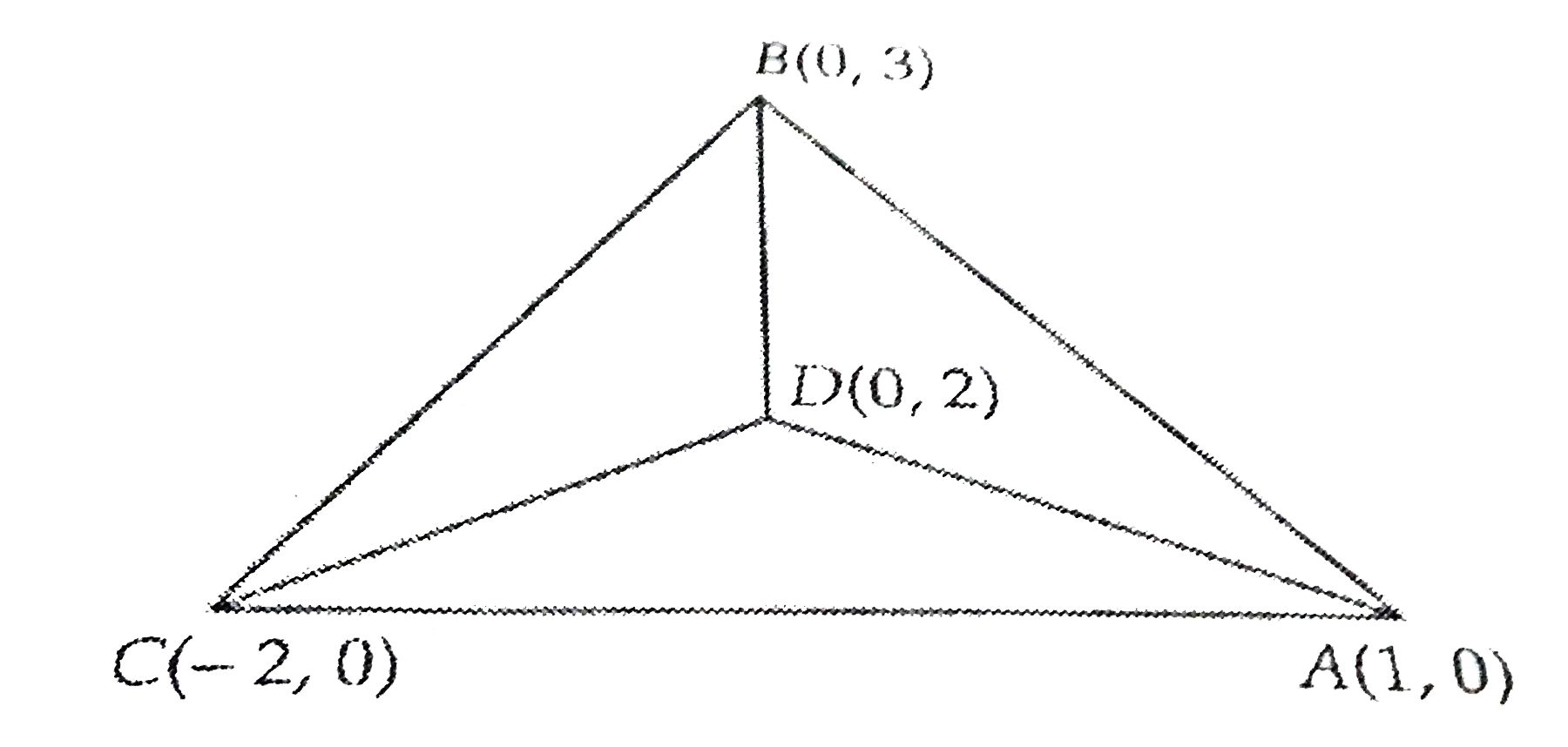Statement-1: The quadrilateral whose vertices (in order) are A(1,0), B(0,3) , C(-2,0) and D(0,2) cannot be convex.
Statement-2: A quadrilateral ABCD ( in order is) is convex if when any diagonal is taken then the remaining vertices must be on the opposite sides of it.
Statement-1 is True, Statement-2 is True, Statement-2 is a correct explanation for Statement-1
Statement-1 is True, Statement-2 is True, Statement-2 not a correct explanation for Statement-1
Statement-1 is True, Statement-2 is False.
Statement-1 is False, Statement-2 is True
The correct Answer is:A
Statement-2 is correct the because ifn one angle, say D of the equadrilaterial ABCD which is not convex is more thant , then B and D lie on the same side of the diagonal AC.
Statement-2 is true. Also, statement-2 is a correct explanation for statement-1

Topper's Solved these Questions
- BOOK - OBJECTIVE RD SHARMA ENGLISHCHAPTER - CARTESIAN CO-ORDINATE SYSTEM EXERCISE - Exercise27videos
CARTESIAN CO-ORDINATE SYSTEM
- BOOK - OBJECTIVE RD SHARMA ENGLISHCHAPTER - CARTESIAN CO-ORDINATE SYSTEM EXERCISE - Section I - Solved Mcqs29videos
CARTESIAN CO-ORDINATE SYSTEM
- BOOK - OBJECTIVE RD SHARMA ENGLISHCHAPTER - BINOMIAL THEOREM AND ITS APPLCIATIONS EXERCISE - Chapter Test58videos
BINOMIAL THEOREM AND ITS APPLCIATIONS
- BOOK - OBJECTIVE RD SHARMA ENGLISHCHAPTER - DETERMINANTSEXERCISE - Chapter Test30videos
DETERMINANTS
Similar Questions
Find the area of the quadrilateral whose vertices taken in order are A(−5,−3)B(−4,−6)C(2,−1)andD(1,2).
View SolutionFind the area of the quadrilateral whose vertices are : (−4,5),(0,7),(5,−5)and(−4,−2)
View SolutionFind the area of quadrilateral ABCD, whose vertices are A(−4,8),B(−3,−4),C(0,−5)andD(5,6).
View SolutionFind the area of the triangle whose vertices are (2,3,0) , (2,1,1) and (0,0,6)
View SolutionFind the area of the quadrilateral whose vertices, taken in order, are (–4,–2),(–3,–5),(3,–2) and (2,3).
View SolutionFind the area of a rhombus ABCD whose vertices are A(3,0) ,B(4,5),C(-1,4) and D(-2,-1)
View SolutionFind the equation of the medians of ΔABC whose vertices are A(1,0), B(2,4) and C(3,2).
View SolutionFind the area of the quadrilateral ABCD having vertices A(1,1),B(7,−3),C(12,2), and D(7,21).
View SolutionShow that the quadrilateral with vertices (3,2),(0,5),(−3,2),(0,−1) is square.
View SolutionIf the area of the quadrilateral ABCD whose vertices are A(1, 1), B(7, -3), C(12, 2) and D(7, 21) is Δ. Find the sum of the digits of Δ.
View Solution

